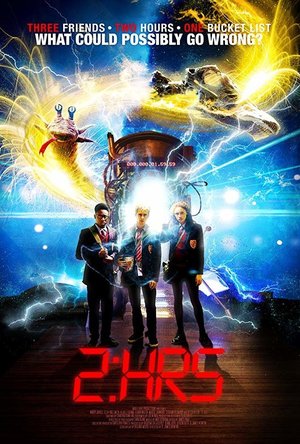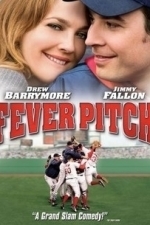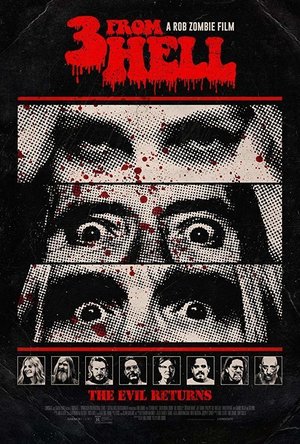Beyond that the content of the book itself was a mixed bag of the pleasurable and the pointless.
Where Cline excelles in this book is in her portrayal of a normal adolescent female trying to fit the role society has dictated for her. It's important to note that Evie is normal - she's not in the small group of incredibly popular, socially adept, fashionably en point and appropriately presented girls of the moment, nor is she so far away from the 'norm' that she is considered especially weird. She falls firmly within the parameters of 'normal' girls who are just struggling with the 'project of their girlhood'. Nor is it just girls that Cline succeeds in painting an accurate picture of - the tribulations of Evie's mother (newley divorced and struggling to realise the relevance and attraction that society expects from her again) speak to the ongoing and endless demands of a civilisation that puts endless pressure on it's female members to adhere to a very narrow and sharply defined criteria in order to be 'acceptable'. This pressure is something I imagine most female readers of this book will relate to, regardless of age, because, of course, it is still very much a daily aspect of most girls' and womens' lives; some possibly even recognising individual situations in which they have been at some stage in their life.
Understanding and empathising with Evie then, it is disconcerting to follow her absorption into the cult; her fascination with the older girls, the ones she later reflects upon as barely more than children themselves; the ease with which she is manipulated through her desire to please her new friends and to defy her mother; the lies sher emotional side is sold and accepts, even as her more rational mind recognises that they are lies...
These are the things Cline excelles in. I can honestly say I have never read an more accurate depiction of clumsy, normal female adolescence.
Unfortunately interspersed through these parts are large tracts of pointless and incredibly, horribly flowery waffle that don't really add anything else to the story other than to repeat, endlessly the message that 'the girl who was part of the cult' had a sad and unfulfilling life afterwards.The message that she screwed up could have been delivered successfully at the beginning and reinforced at the end - it didn't need that kind of repetition.
Overall I would say that for fans of general fiction (which I'm not), and teen readers (which I am also not), this is probably a good read, just expect it to drag at times. It's not one I shall be revisiting.
Hazel (1853 KP) rated Picasso: The Colouring Book in Books
Dec 7, 2018
...
<i>Pablo Picasso: To Colour In</i> was published in April 2016 with the intention of using the popular fad to educate readers/colouring book enthusiasts about the techniques and secrets of the great master. Each work included in the book has a brief paragraph explaining what it is (in case you cannot tell) and a few details about Picasso’s intentions or the events happening in his life at the time.
...
Naturally, it would be impossible to produce a book of all Picasso’s recorded works, but the editors of this particular colouring book have carefully selected examples that span the majority of his life, thus encompassing the different styles he experimented with.
The author of the text – presumably Frédérique Cassegrain, who also wrote the biography and information for each included artwork – gives helpful advice about how to colour in the outlined versions of Picasso’s paintings. The paper is thick enough to be suitable for paints, particular Gouache, which is water soluble and easily blended. Alternatively, coloured pencils may be used, preferably of artistic quality, which may be more suitable for those less confident in art and design. Another option, although not mentioned by the author, are felt-tip pens. Usually, these should be avoided due to ink bleeding through the page, however, the paper is single sided, so there is no chance of damaging the following colouring page in the book.
Purchasing Pablo Picasso: To Colour In and completing the book, provides not only hours of fun and relaxation, but an opportunity to discover and understand the artist. Unlike at a gallery where the brain may switch off, being able to go away and return to the book gives us time to absorb the information and concentrate more clearly on the details of each painting.
Opposite each colouring page is a copy of the original in full colour, meaning that, if one desired, one could replicate Picasso’s work as closely as possible. By doing, rather than just looking, we begin to understand the colour choices, piece together the geometric shapes to form an image and begin to understand the thought processes of the artist.
Interestingly, there are two paintings that stand out amongst all the others. These were produced during and after the First World War, a time when Picasso returned to a more classical style of artwork. These are The Pipes of Pan (1923) and The Bathers (1918). Both show a completely different side to Picasso and would not immediately be recognised as his own work. Despite not being entirely life-like, there are no elements of Cubism or Surrealism and the colour palette is altogether natural. Picasso has focused on shading and tone to create a realistic appearance, a contrast to the flattened portraits he is known for.
...
Pablo Picasso: To Colour In will appeal to artists, art historians and other creatives with its contrast of light relief and in-depth knowledge. The book is available online at retailers such as Amazon and The Book Depository from approximately £6. If Picasso is not your thing, there are other artists available in the series of colouring books, including Klimt, Hokusai (Japanese Art), Monet, Van Gogh, Caillebotte and Manet (Impressionists), and Paul Klee. Whatever your preference, prepare to learn whilst you are relaxing and having fun.
Darren (1599 KP) rated 2:HRS (2018) in Movies
Jun 20, 2019
Story: 2: Hrs starts as we meet teenage slacker Tim (Jarvis) who spends his time painting London with graffiti with his best friends Vic (Smith) and Alf (Fofana). While on the school trip to a museum, the three sneak off and interrupt a science conference being hosted by conman Groad (Allen) who has created a machine that can tell when the living object inside will die.
Tim goes in the machine only to learn that he only has 2 hours left to live, left shocked, Tim sets out a small bucket list of achievable targets and while the friends target these goals, they are being chased down by the people behind the experiment who want to research and make sure Tim dies on time.
Thoughts on 2: Hrs
Characters – Tim is a school slacker with a talent for graffiti, he has been acting out because of the death of his father, which has changed him, his friends see this and his rebellious ways puts his life in danger when he learns he only has 2 hours to leave from spending time in a machine which can perform a prediction of when someone will die. He must go through a life lesson as this film unfolds. Vic and Alf are the two supportive friends, that join him on the adventure, we don’t learn too much about them without giving away spoilers. Groad is the businessman/conman that is running the operation, he hides in his apartment with fake backdrops as he conducts meetings. He is always looking to create a good face story for any PR situation. We also have the younger sister Shona to Tim that wants to look up to him only to be left disappointed most of the time and the two bumbling idiots trying to catch the teenagers.
Performances – Harry Jarvis in the leading role does a very good job, we see how his character must change over the course of the film ad he shows us this in his performance. Ella-Rae Smith and Alhaji Fofana are both good in their supporting roles while Keith Allen gives us a good performance as the shady character we see behind the curtain about.
Story – The story follows three friends that decide to ditch a school trip and end up on there on adventure after being caught in the middle of an adventure when one of them learns they only have two hours to live. This does sound like a simple fun adventure family film, which it is, though it does have deeper meaning for Tim who must learn to life lessons in this time while dealing with his own personal tragedy after not doing so when it happened.
Family – This film keeps the films moments all around the family problems Tim is facing, it keeps everything PG even with jokes adults will understand.
Settings – The film is set around London, which is good because it shows how difficult losing a parent can be in the busy city and how easy it is to rebel.
Scene of the Movie – Poetry competition.
That Moment That Annoyed Me – That pet, what was that?
Final Thoughts – This is a family film that can be enjoyed by everyone, it has good laughs, a smart character development story and a nice adventure.
Overall: Family film for all to enjoy.
https://moviesreview101.com/2018/07/05/2-hrs-2018/
Gareth von Kallenbach (980 KP) rated Fever Pitch (2005) in Movies
Aug 14, 2019
That is, until the magical season of 2005 where lifetimes of tears and frustrations were cleansed by an improbable and historic comeback from a three games to none series deficit to the Yankees, and a four game sweep of the St Louis Cardinals in the World Series.
In the new romantic comedy Fever Pitch two worlds are about to collide in a fury of romance and humor when workaholic Lindsey Meeks (Drew Barrymore), meets and starts to date a school teacher named Ben (Jimmy Fallon). Though their first date is hampered by a bad virus, Lindsey is taken by Ben’s gentle and compassionate nature, finding him very kind, loving and attentive.
As the two become closer over the winter, Ben asks Lindsey to attend opening day at Fenway with him as a sign of his love and commitment to her. Knowing Ben’s passion for the game, Lindsey accepts but soon finds out, that Ben is fanatical about his love of the Sox and that every aspect of his life has to be scheduled around their
games. While this is at first a minor issue, as time goes on it becomes a bigger problem when Ben refuses to take trips or attend parties and functions that interfere with games.
Naturally this soon wears very thin for Lindsey as she begins to question how committed Ben is to her and their future. The humor in the film arises from watching the very kind and lovable Ben become a different person when he is watching his beloved Sox. Rather then painting Ben as an oddball, the story does show why he has such an extreme devotion to the team, as well as how the people around him react to his devotion. His male friends simply accept it as they are rabid fans themselves, while we learn that every woman in his past has had an issue with his love of the Sox.
What really makes the film shine is the solid work by the two leads. Barrymore has a charm and grace to her that lets Lindsey come off as a very lovable and compassionate lady, rather than a selfish shrew who craves attention. Fallon meanwhile is solid, showing the duality of his life, as well as the dilemma he has between wanting to be with Lindsey and his lifelong devotion to the Sox.
The film moves at a steady pace and has more than enough humor to make you leave the theater with a smile, even if you are not a baseball fan. While some may say the plot is a bit shallow and formulistic, the film wisely puts the attention on the two leads and not on the sports action which results in a very winning combo.
Andy K (10823 KP) rated 3 From Hell (2019) in Movies
Oct 18, 2019 (Updated Oct 18, 2019)
First, why did Zombie wait so long between sequels? The time between House of 1,000 Corpses and The Devil's Rejects was only 2 years. Zombie was a hot director at the time. Maybe he felt his career as a prominent horror director would continue to blossom after he was handed the reigns of rebooting the Halloween franchise.
Second, talk about painting yourself into a corner thematically having your three main characters go up against a police roadblock at the end of the last film getting sprayed with an onslaught of law enforcement ammunition. These are not immortal characters here, so explaining that circumstance would be difficult one indeed.
Third, and probably most importantly for fans, one of your leads has become deathly ill, lost a lot of weight, and probably cannot handle the strain of a large acting role at this time. Sid Haig dies only a few days after this film's release and his role was reduced to basically a cameo within the first few minutes of the movie disappointing fans of his unique personality as Captain Spaulding to minimal screen time. This eventuality made Rob Zombie have to do extensive rewrites to reinvent his third 3 From Hell baddie, and it was definitely a step down.
Explaining the plot of the film would almost mirror exactly that of the previous film. Somehow, the 3 survive their being riddled with 20 bullets each and get incarcerated for their convictions of the years of murder , torture and other bad deeds they have inflicted on their victims. Otis breaks free and escapes one day on his prison work detail and goes after the family and friends of the warden. A plan is put in place to execute the release of his beautiful, but deadly sister, Baby, by smuggling her out in a prison guard uniform.
After she returns to the warden's home full of kidnap victims (carbon copy of the motel scenes from Rejects) the two baddies along with their badass stepbrother decide to make their way to Mexico to evade capture and indulge in the good life of excess.
After they arrive, they have fun with the locals while secretly are betrayed to a band of south of the border hooligans looking to get revenge themselves on the 3 who had murdered a relative (again the same as the sheriff in Rejects).
I really couldn't believe the plot points being so very similar to Rejects. Zombie clearly ran out of good ideas and felt like the audience would just be happy to see more random bloody violence perpetrated by characters they knew and loved. Not true for me as I became bored quite quickly hoping for something interesting to happen which never really did.
The look of the film was also quite different. It seems Zombie's popularity is not what it once was and his budget this time must have been much smaller. The cinematography was weak and not very creative and the visual effects were just north of Sharknado level I thought with poor quality with the bullet wounds and stabbing injuring looking amateur.
Overall, very disappointed for a long wait with a poor 3rd film payoff. This is one of those times they should've quit with two movies and quit while they were ahead.

Bamba Post Office (Free) - Wrap gifts, write a card and send it to the postman
Education and Games
App
•••Join 2+ million Bamba customers - kids learn through play with Bamba!••• Kids love...

The Home Depot Canada
Shopping and Lifestyle
App
More saving. More doing. By clicking “Install”, you acknowledge having read and understood...

Color Therapy Adult Coloring
Book and Entertainment
App
#1 Coloring Book for Adults with MILLIONS of Addicted Coloring Artists! Download Now for FREE! Join...

Colorgram Adult coloring book
Entertainment, Book and Stickers
App
First ever Playback Coloring app to fade away stress and anxiety with a relaxing coloring...

Adobe Photoshop Sketch
Productivity and Social Networking
App
Draw with the power of the Photoshop painting engine and a variety of built-in brushes, pencils,...




